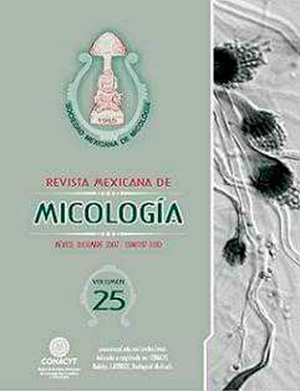Formation of chlamydoconidia of Candida albicans and C. dubliniensis in different liquid media and conditions of incubation
DOI:
https://doi.org/10.33885/sf.2007.3.999Keywords:
Candidiasis, chlamydoconidia, liquid mediaAbstract
Candida albicans and C. dubliniensis display similar phenotypic and pathogenic
characteristics. Thus, the search for accurate tests to differentiate these two species is under
way. A simple phenotypic test that differentiates these two species is the production of
chlamydoconidia. Candida albicans develops terminal chlamydoconidia, whereas C.
dubliniensis, tend to form multiple chlamydoconidia. Currently the formation of these
structures is made in solid culture media. However, this approach takes more than 48 h. In
this study we have demonstrated that supplemented liquid media with milk in agitation has
the advantage to produce chlamydoconidia in shorter periods of time than the average
conventional methodologies. Although chlamydoconidia rapidly developed in this medium,
the differentiation of both species by this method proved to be difficult
Downloads
Downloads
How to Cite
Issue
Section
License
Copyright notice
Open access policy
The authors who publish in this journal accept the following conditions:
In accordance with copyright laws, Scientia Fungorum recognizes and respects the authors’ moral rights, as well as the ownership of property rights, which will be transferred to the journal for dissemination in open access. Scientia Fungorum does not charge for submission and processing of articles for publication.
All the texts published by Scientia Fungorum –with no exception– are distributed under a Creative Commons License Attribution-NonCommercial-ShareAlike 4.0 International (CC BY-NC-SA 4.0), which allows third parties to use the publication as long as the work’s authorship and its first publication in this journal are mentioned.
The authors can enter into independent and additional contractual agreements for the nonexclusive distribution of the version of the article published in Scientia Fungorum (for example include it into an institutional repository or publish it in a book) as long as it is clearly and explicitly indicated that the work was published for the first time in Scientia Fungorum.
For all the above, the authors shall send the form of Letter-transfer of Property Rights for the first publication duly filled in and signed by the author(s). This form must be sent as a complementary file.
This work is licensed under a Creative Commons Attribution-NonCommercial-ShareAlike 4.0 International license (CC-By-NC-SA 4.0).



